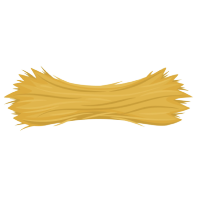In the past, the “grey-rosé” color, called “Oeil de Perdrix”, emerged not because it was desired, but because it was often unavoidable. Some Pinot Noir grapes would inevitably be crushed, and the skins would impart color to the must, something many of the major Champagne houses hurried to “correct” by treating the must – unfortunately removing part of the wine’s flavor and character in the process.
“Oeil de Perdrix” has been the specialty of the Jean Vesselle house for many years. It is made exclusively from Pinot Noir grapes, sourced from the best and sunniest parcels, explaining the wine’s intense and meaty character. At the same time, it is dry and elegant with a beautiful, fruity bouquet. The color is quite special and explains the name “partridge eye” – almost grey-rosé.
Oeil de Perdrix is a characterful champagne that can easily be enjoyed as an aperitif or on its own, but also pairs well with a full meal. A refined experience!
Compared to the millions of bottles produced annually by the big champagne houses, Jean Vesselle’s annual production of about 100,000 bottles is modest. As is often said, less can be more, and among champagne connoisseurs, the family-run Jean Vesselle is considered one of the most skilled “Récoltants-manipulants,” a producer who vinifies the grapes they grow, rather than selling them to a larger company.
Located in the town of Bouzy, renowned for the high quality of the Pinot Noir grape, Jean Vesselle was, until the early 20th century, best known for producing excellent red wines from Pinot Noir, while the other grapes, Chardonnay and Pinot Meunier, were sold to larger producers.
Like many other Champagne producers, Vesselle experienced that all the vineyards not destroyed by the Phylloxera aphid in the late 19th century were instead wiped out by the fighting during World War I. All the vineyards were replanted in 1921, but the economic situation made it impossible to sell the grapes, so Jean Vesselle’s grandfather started making champagne himself. Jean Vesselle’s father continued champagne production but sold about 30–60% of the grapes, and it wasn’t until Jean took over the company that it was decided to use the entire grape production for themselves, a practice that has continued since.
Since Jean Vesselle’s death in the mid-1990s, his daughter Delphine and her husband David have been at the helm. With great skill, they have developed Champagne Jean Vesselle together, and their champagnes enjoy wide recognition and offer excellent value for money. The company’s current 15 hectares of vineyards are planted exclusively with Pinot Noir (90%) and Chardonnay.




